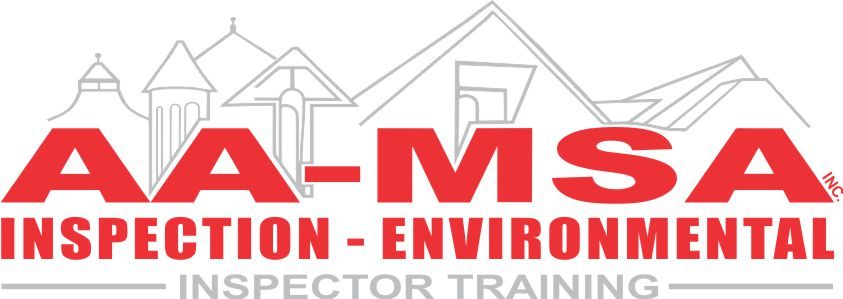Mold Hazards follow water damage inside buildings. What is Mold and Why is it Hazardous? Mold is a type of fungi. Most molds reproduce by forming spores which are released into the air. When spores land on a suitable moist surface they begin to grow, can penetrate porous materials and release chemicals. Most molds are harmless, but some can cause infections, allergy symptoms and produce toxins. Infections are rare in healthy individuals and the effect of toxins is still not well understood. Nevertheless, mold remediation is often necessary to return spaces to a safe condition and make them suitable for occupancy.
Sometimes, the tip-off is that a household member is experiencing chronic respiratory problems that improve when they leave the building but worsen when they return to the building. If you think you have hidden mold your home, consider calling a professional mold investigator. If water has been standing in an indoor space for longer than 24 hours, any porous materials that were soaked, such as carpets, furnishings and wallboard, should be discarded, as there is a strong chance that mold will be growing on these materials. Mold may also be growing on the surface of tile floor covering and sealed wood. A professional mold investigator is needed to perform an assessment to determine the extent of the damage.
Hire a professional to prepare a Mold Clean-up Plan. The most important types of testing are the eyeball and nose tests – can you see or smell mold, and/or, do you see evidence of water damage? If you can see or smell mold, the next step is to identify the source and then remove it. If you smell a musty odor but cannot see visible growth, mold may be hidden behind wallpaper, paint, inside of wall cavities, etc. Sometimes, people may choose to perform testing as part of an investigation to look for hidden mold, or for documentation purposes (i.e., for insurance or litigation). The most important requirement is to control the source of moisture. Next, survey the types of materials and the size of the area involved. This may become important in determining the strategy for remediation and worker protection. Materials that cannot be dried and fully cleaned should be removed using methods that minimize occupant exposure to spores. Mold remediation often involves construction activities. Note: Drying can involve the use of industrial fans, blowers and/or dehumidifiers. However, the more humid the air, the less effective the blowers will be. Note: It is often more cost-effective to remove and replace the building materials than to dry and clean mold-contaminated materials. Porous materials (e.g., drywall, carpets, insulation, ceiling tile, etc.) are different because mold penetrates them making it very difficult to fully clean. As a general rule, if a porous material has been wet for over 48 hours it is best to remove and replace. If you see more than a few isolated areas of mold, such as half of the ceiling or wall or if mold is thought to be present in a home of an individual who lacks a healthy immune system (such as people with cancer, AIDS, etc.), we recommend calling in a professional. As a rule, small areas of water damage require less control when remediating. The work area should be unoccupied; removing people from adjacent spaces is not necessary but is recommended for infants, persons recovering from surgery, immune suppressed people, or people with asthma, hypersensitivity pneumonitis and severe allergies.
Large Areas of Mold Remediation. The work area and areas directly adjacent to it should be unoccupied. • Cover surfaces in the work area and adjacent areas that could become contaminated with secured plastic sheets to contain spores, dust and debris to prevent further contamination. • Seal ventilation ducts/grills in the work area and areas directly adjacent with plastic sheeting. • If remediation procedures are expected to generate a lot of dust (e.g., abrasive cleaning of contaminated surfaces, demolition of plaster walls) or the visible concentration of mold is heavy (i.e., blanket versus patchy coverage) follow the extensive contamination procedures below.
Extensive, Visible Mold Contamination • Hire a professional to develop a suitable mold remediation plan. The plan should address work area isolation, the use of exhaust fans with high-efficiency particulate air (HEPA) filtration, and the design of airlocks/ decontamination room. DTSEM FS-3713 09/2013 • Consult with environmental health and safety professionals with experience performing mold remediation before beginning this level of remediation.
Get The Mold Out: Mold Clean-Up Guidance for Residences If you choose to hire a professional, a home inspector licensed by the CT Department of Consumer Protection and certified by the American Society of Home Inspectors, National Association of Certified Home Inspectors, or CT Association of Certified Home Inspectors can look for water damage. Please note that the state of Connecticut does not license individuals or entities that perform mold inspection or mold abatement. In situations where someone living in the home lacks a healthy immune system (due to cancer or other diseases), or there is a concern about hidden mold, mold growth on or in complex building materials/structural elements, or an extensive area of visible mold growth, you may choose to hire an indoor environmental professional (IEP) who is specifically trained in the area of indoor mold assessment and credentialed by an independent professional organization, to help you evaluate the situation and design a remediation plan, if appropriate.
